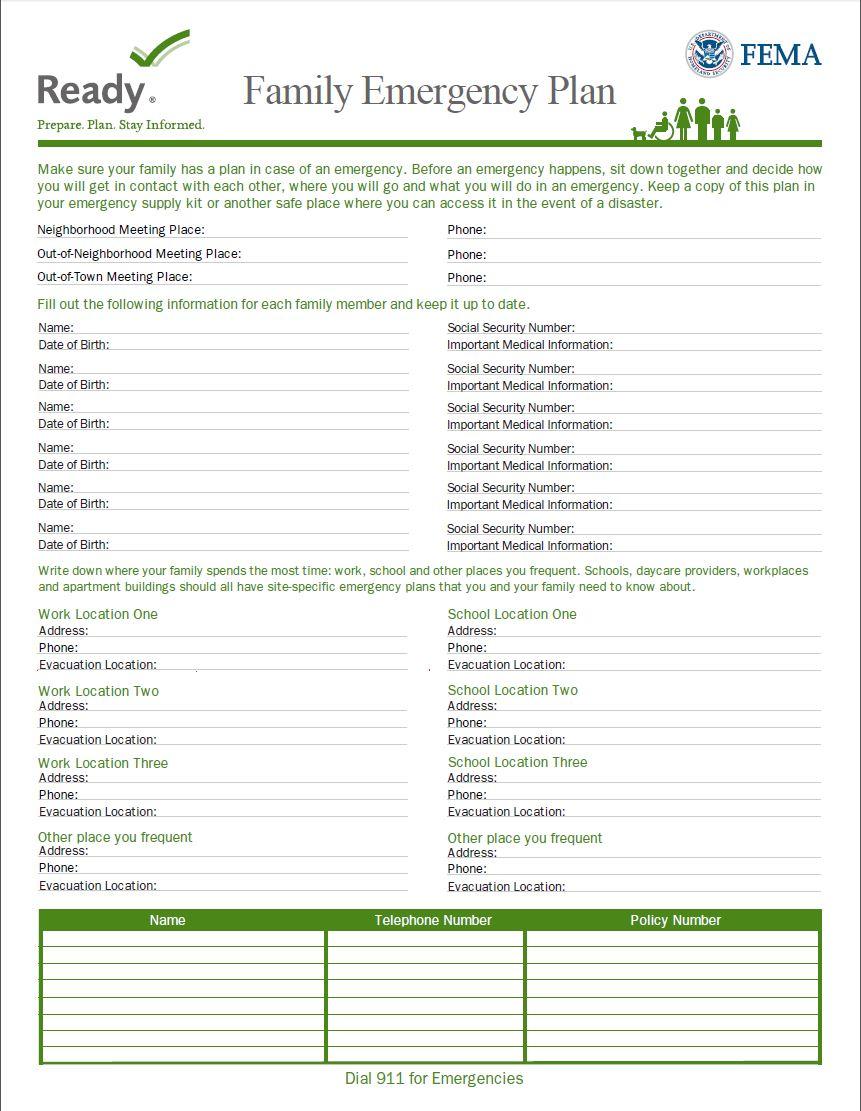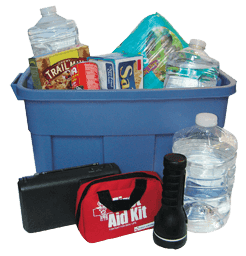| Step 1: Learn Your Risks & Responses - Be Informed! |
|
- Emergency Alerts: You can receive important lifesaving alerts no matter where you are - home, school, or work. - Social Medial: Some weather & safety information can also be relayed through social media. However, please remember that this is NOT an official means of receiving important lifesaving information. - Natural Disasters: Know which natural disasters can occur in your area and how to prepare and stay safe. - Other Hazards: Remember to plan for things such as pandemics, terrorist attacks, etc. - Shelter & Evacuation: Make sure you know where the nearest shelters are, as well as the appropriate evacuation routes/plans for specific situations. |
| Step 2: Make a Plan! |
|
It is important to make a family emergency plan that can be put into action as soon as disaster strikes. Make sure to include plans for children, seniors, disabled, and don't forget pets! |
 |
| Step 3: Build a Supply Kit! |
 |
A supply kit is a must when planning for potential disasters. You need to make sure you and your family have the necessary food and supplies to sustain you until the power returns or help arrives. It is also important to keep the kit maintained by keeping food/water fresh and supplies working properly. It is typically best to store the kit, along with any pet supplies, in a closet or the basement. |
| Step 4: Get Involved! |
|
Find opportunities to support community preparedness. There are many ways to get involved before disaster strikes. So, ask yourself, "How can I help?" |

